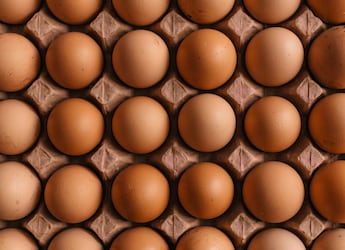The life of a working professional can be quite hectic. From managing things at home to following a tight schedule at work, meeting deadlines, and more, there's a lot that has to be done. And this can make you feel tired and lethargic by the end of the day. Some may even struggle to find motivation to work the next morning. You may blame your hectic schedule and unceasing demands at work. But don't ignore the role of diet. The type of food that you eat on a regular basis also influences your energy and motivation levels. Most working professionals often neglect the importance of creating and following a balanced diet chart. It may seem like another task on your list of things to do, but once you make one, there's literally no going back. Without further ado, let's take you through the steps of creating one:
Why Is It Important To Create A Balanced Diet Chart?
A balanced diet chart helps us to be mindful of our eating choices. It's like a guide that you can always refer to when confused about what to eat and what not to eat. As the lives of working professionals are already so fast-paced, making one helps save time. Not only this, but it is also great for those who are following a weight-loss diet. It's like a win-win situation that allows you to keep both your health and calorie intake under check.
Also Read: 5 Smart Changes To Make In Your Diet Chart For Weight Loss After 30
Here Are 5 Ways To Create A Balanced Diet Chart For Working Professionals:
1. Don't skip breakfast:
We all know the importance of starting our day with a wholesome breakfast. However, more often than not, we end up skipping it. Our fast-paced lives are the primary reason for this unhealthy habit. You may think it doesn't make much of a difference, but it indeed does. A breakfast meal on a balanced diet chart for working professionals should include all the essential nutrients. Try to include a wholesome blend of high-protein foods along with healthy carbohydrates and fibre. Make sure never to skip breakfast so as to stay energised and have a productive day at work.
2. Stay hydrated:
Staying hydrated is another important aspect of a balanced diet chart. Just like we shouldn't skip breakfast, we shouldn't skip drinking water either. Always carry a bottle of water with you to work, as this ensures you're well hydrated throughout the day. It will help keep your energy levels high and your hunger levels low. But remember, moderation is key, and drinking too much water is not a good idea. Also, avoid drinking water in between meals, as this can have an impact on your digestion. If you're wondering how much you should drink and when the right time is, click here to get all your answers.
Also Read: Weight Loss: These Low-Cal, High-Protein Indian Vegetables Must Be Included In Your Diet Chart
3. Switch to healthy caffeine:
Caffeine addiction is real, and this becomes even more so at the workplace. There are times when we simply lose count of the tea or coffee cups we've had throughout the day. Sure, it'll spike your energy for a bit, but soon you'll end up feeling even more lethargic than before. When creating a balanced diet chart, be mindful of your caffeine intake and avoid going overboard. You can also consume caffeine in a healthier way, such as with a cup of ginger tea with lemon and honey or a cup of green tea. This simple switch can do wonders to keep your health in check.
4. Make healthier snacking choices:
You should also include healthier snacking options in your balanced diet chart. We know it can be quite tempting to gorge on crispy snacks such as samosas and kachoris during or after work hours. But if you want to stay fit and well-nourished, you must avoid eating them at all costs. Instead, opt for healthier snacking options such as a bowl of fruits, makhana, or high-protein foods such as nuts. By doing so, you'll feel satiated for a longer period of time and won't feel the urge to binge on unhealthy snacks. It may require a bit of effort to make this swap, but it will definitely be beneficial for you in the long run. It's also a great practice to follow for those who are on a weight-loss diet.
5. Do not postpone dinner:
Our work schedules are usually hectic, which means we reach home late as well. And this causes us to postpone our dinner. Now, of course, it won't be possible to have your dinner meal before reaching home. But remember to have it as soon as you return. Do not postpone it, and have it 2 to 3 hours prior to sleeping. A healthy dinner meal on a balanced diet chart for a working professional should be enriched with high-protein foods. Avoid having unhealthy carbohydrates and sugar, as this can disrupt your digestion process and have a direct impact on your health.
As a working professional, you must make a conscious effort to include nutrient-rich foods in your diet. By creating a balanced diet chart, you can achieve this goal of yours with ease. Make one now and start your journey towards a healthier you.
